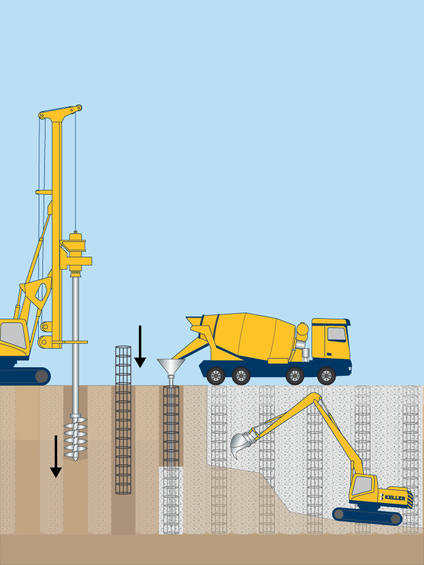Secant piled walls are a form of embedded retaining wall and can be designed as cantilevered or propped for greater excavation depths. These techniques form a continuous barrier to reduce flow of soils and water through the wall.

Common uses
Process
Secant pile walls are installed as cast in situ bored or CFA piles, and often installed through a temporary concrete guide. The guide ensures that piles are accurately located to achieve an interlock (or ‘secant’) cut into the adjacent pile.
A sequence of works is carefully considered to install the retaining wall and the control of the excavation works post installation. Where propping is required to the wall the mechanism of the propping and any prestress required needs to be clearly identified and implemented.
Advantages
Quality assurance
Keller use the latest technology, testing regimes and best practices protocols developed over many years to ensure the position, verticality and structural integrity of our pile walls, in addition Keller strive to undertake periodic monitoring of the wall performance is undertaken, by both embedded inclinometers in the wall, and surface surveying at specific stages of construction.